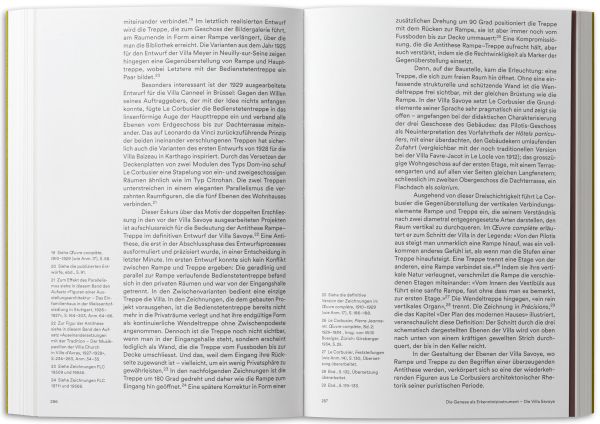Le Corbusier. Von der eleganten Lösung zum offenen Werk
GVA Gemeinsame Verlagsauslieferung Göttingen
GmbH & Co. KG
P.O. Box 2021
37010 Göttingen
Germany
+49 551 384 200 0
info@gva-verlage.de
Bruno Reichlin ranks among the world’s most distinguished architectural theorists. His occupation with protagonists of 20th-century architecture – such as Eileen Gray, Ludwig Mies van der Rohe, Philip Johnson and, above all, Le Corbusier – and their work is guided by a method that looks at the characteristics of a building as well as at its theoretical foundations. Reichlin’s writings and his own built work as a practicing architect is marked by a deep understanding for how buildings materialize signs and symbols and by a referential framework that includes also literature, film and visual art.
This book collects Reichlin’s thirteen essays on Le Corbusier, written over the period of four decades. Taking as examples the villas La Roche, Mandrot, and Savoye; Harvard University’s Carpenter Center for Visual Arts; the Petite Maison on Lake Geneva; and the project for a hospital in Venice, he explores aspects of Le Corbusier’s creativity to reveal underlying principles and their manifestation in the realized buildings. Rich archival materials as well as analytical plans and diagrams round out the volume.
«Das wissenschaftliche Buch ist also Resultat langjähriger Forschung, getrieben durch Bruno Reichlins ungestüme Neugier und die Unverfrorenheit, die Dinge so zu sehen, wie sie sind - und nicht so, wie man sie gerne haben möchte.» Christian Sumi, werk, bauen + wohnen
«Man muss das Buch insgesamt in zweierlei Hinsicht und jeweils mit viel Gewinn lesen: zum einen als eine sehr subtile, weiterhin gültige Werkanalyse durch einen ebenso historisch wie auch architektonisch denkenden und produzierenden Autor. Zum anderen aber stellt es ein wichtiges historisches Zeugnis dar.» Christian Freigang, ArtHist.net






